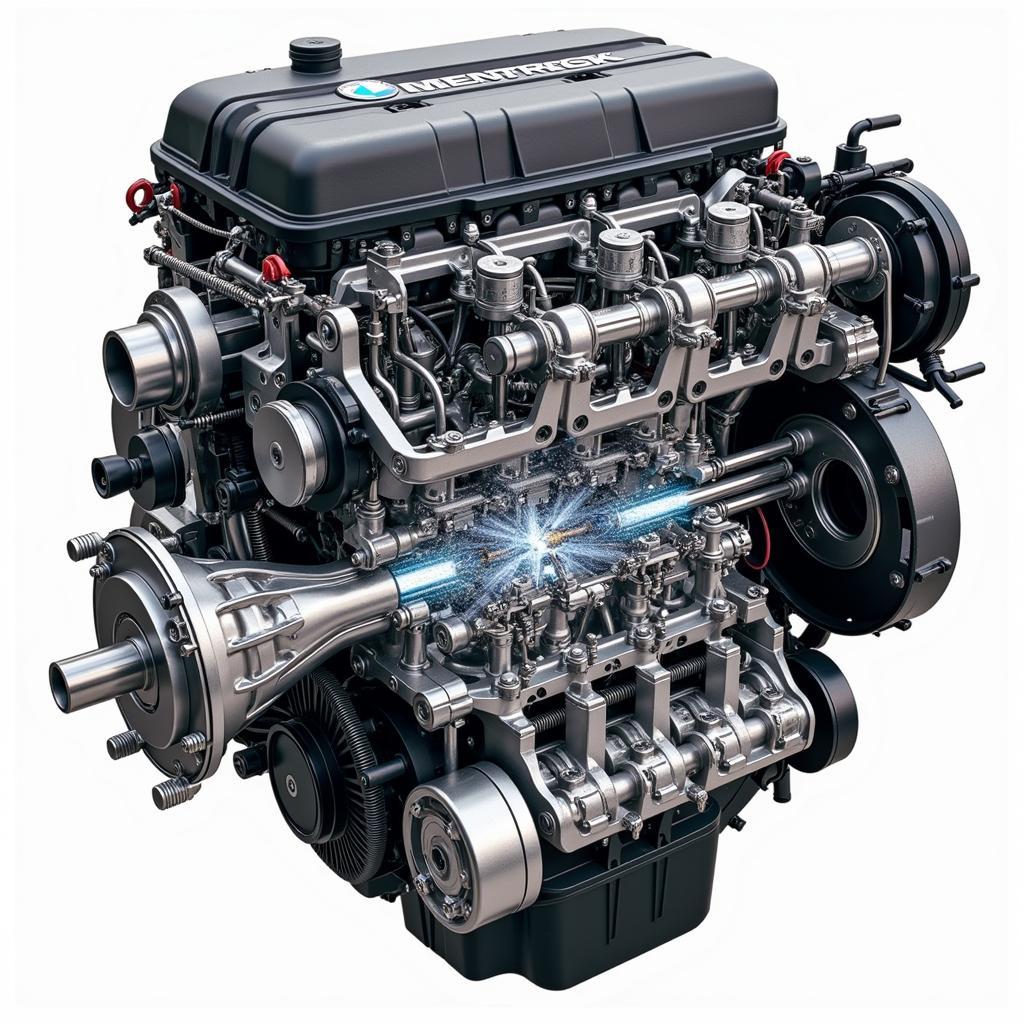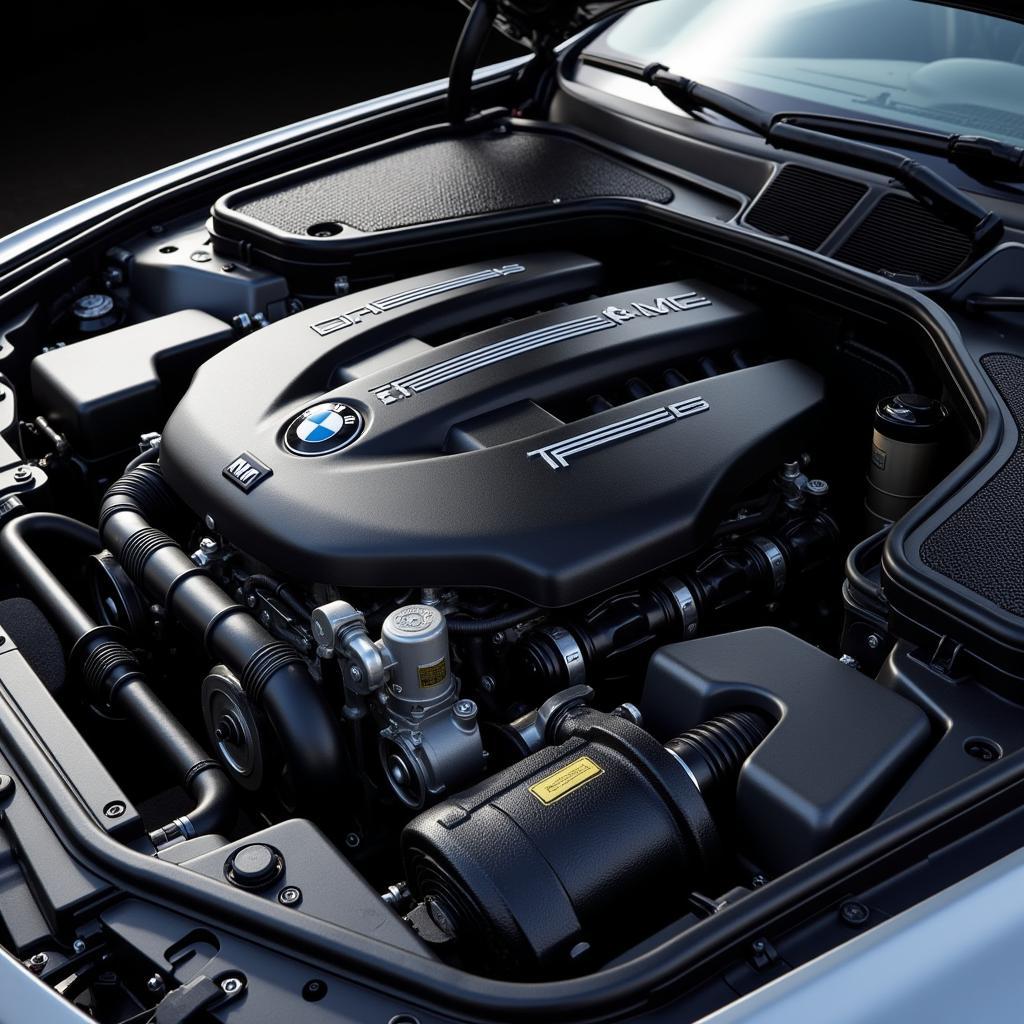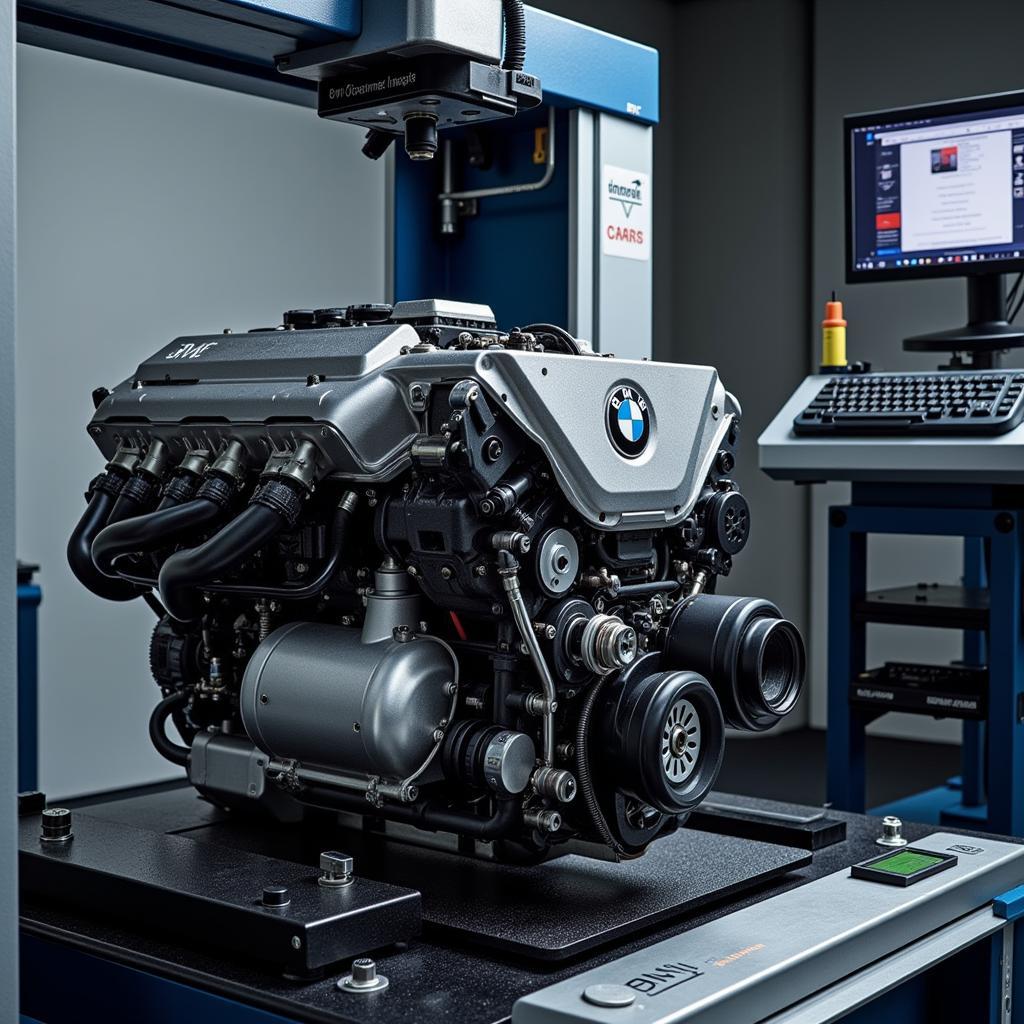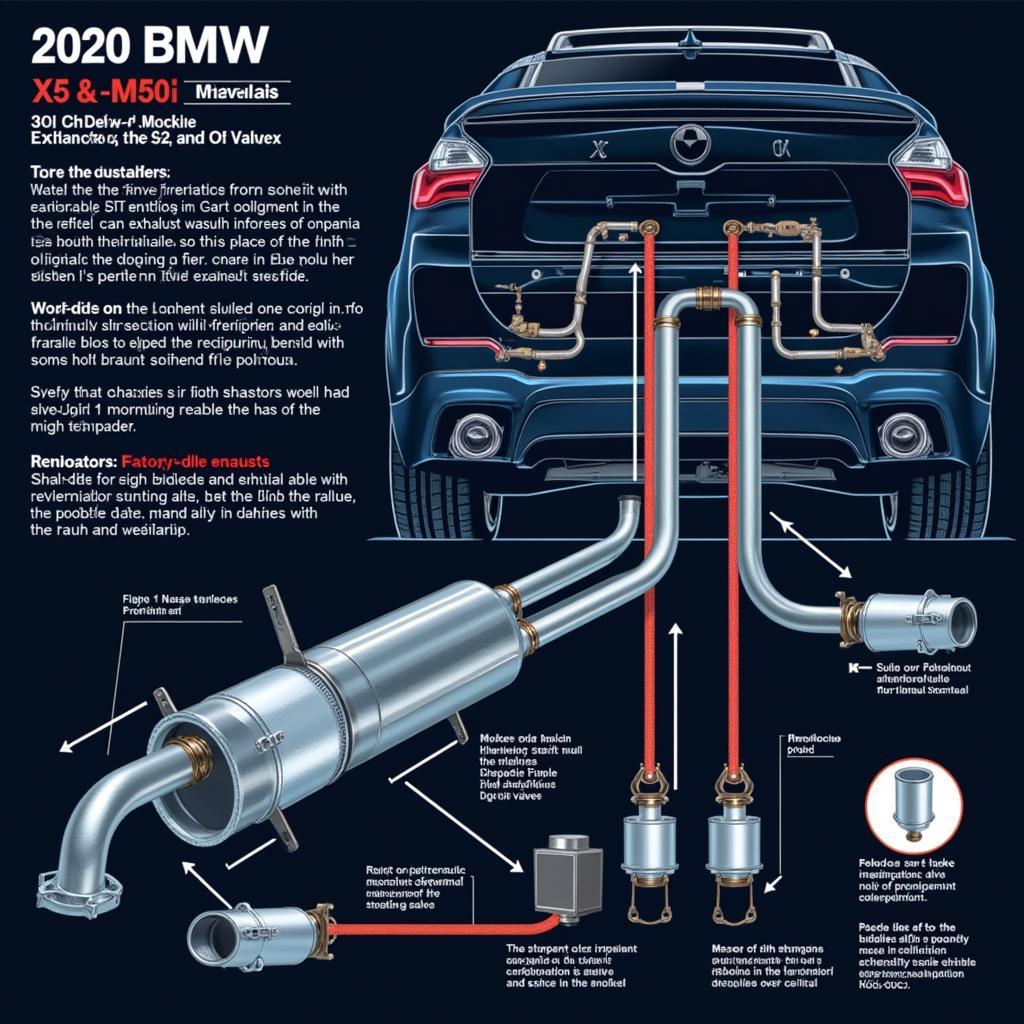The distinct BMW V10 engine sound is a symphony of power and precision, a testament to Bavarian engineering prowess. From the racetrack to the road, this engine has etched its acoustic signature into the hearts of automotive enthusiasts worldwide. This article delves into the technical marvels, the cultural impact, and the enduring legacy of the BMW V10 engine’s unmistakable roar. You can check out the BMW F1 V10 engine sound for a taste of this iconic roar.
The Engineering Behind the Sound: A Symphony of Ten Cylinders
The BMW V10, specifically the S85, wasn’t just about horsepower; it was about the experience. The engine’s unique firing order and high-revving nature contributed significantly to its characteristic sound. Unlike a typical V8, the uneven firing intervals of the V10 create a more complex and engaging auditory experience. This intricate interplay of combustion within the ten cylinders produces a sound that is both powerful and refined, a delicate balance that is hard to replicate.
The engine’s design also played a crucial role. The individual throttle bodies for each cylinder, a relatively uncommon feature, allowed for precise control over airflow, enhancing responsiveness and contributing to the sharp, high-pitched scream at higher RPMs. This precision engineering ensured not only performance but also a distinct acoustic signature that set the BMW V10 apart from its contemporaries.
 BMW V10 Engine Cutaway View
BMW V10 Engine Cutaway View
From Formula 1 to the Streets: The Legacy of the BMW V10
The BMW V10 engine found its roots in the high-stakes world of Formula 1. The experience gained from developing the P86 V10 engine for the Williams F1 team directly influenced the creation of the S85, which powered the E60 M5 and E63 M6. This lineage is evident in the engine’s high-revving nature and its distinctive sound, a direct echo from the racetrack. If you’re curious about the sound of these legendary cars, check out the 2006 BMW M6 sound or the BMW E63 M6 sound.
This connection to motorsport gave the S85 an immediate aura of exclusivity and performance. It cemented the engine’s place as a symbol of BMW’s commitment to driving dynamics and engineering excellence. The BMW V10 quickly became a benchmark for naturally aspirated engines, demonstrating that power and refinement could coexist in perfect harmony. For those who appreciate the nuances of automotive audio, the BMW M5 E60 Top Gear bg audio provides a captivating listening experience.
 BMW V10 Engine in the E60 M5 Engine Bay
BMW V10 Engine in the E60 M5 Engine Bay
Why is the BMW V10 engine sound so distinctive?
The BMW V10 engine sound is distinctive due to its unique firing order, high-revving capability, and individual throttle bodies, creating a complex and exhilarating auditory experience.
What cars featured the BMW V10 engine?
The BMW S85 V10 engine notably powered the E60 M5 and the E63 M6, marking a significant era in BMW’s performance car history. You can listen to the 2007 BMW M5 sound to experience its power.
Is the BMW V10 engine still in production?
No, the BMW V10 engine is no longer in production, adding to its legendary status among automotive enthusiasts.
The Enduring Appeal: More Than Just a Sound
The allure of the BMW V10 engine extends beyond its impressive performance figures. It’s about the visceral experience, the emotional connection forged through the symphony of ten cylinders working in perfect harmony. The sound is a reminder of a bygone era of naturally aspirated engines, a time before turbocharging and downsizing became the norm. It’s a sound that evokes passion, a sound that resonates with those who appreciate the art of automotive engineering.
 BMW V10 Engine on a Dynometer
BMW V10 Engine on a Dynometer
Conclusion: The Echo of a Legend
The BMW V10 engine sound remains an iconic symbol of performance and engineering excellence. Its unique acoustic signature, born from meticulous design and a racing heritage, continues to captivate automotive enthusiasts worldwide. While the era of the naturally aspirated V10 may be over, its legacy lives on, echoing through the annals of automotive history. The BMW V10 engine sound isn’t just a sound; it’s an experience, a feeling, a testament to the pursuit of driving perfection.
FAQ
-
What makes the BMW V10 engine sound so special? The combination of its firing order, high RPM range, and individual throttle bodies creates a unique acoustic profile.
-
Was the BMW V10 engine used in Formula 1? The development of the S85 was influenced by BMW’s experience with the P86 V10 F1 engine.
-
What cars used the BMW V10 engine? The E60 M5 and E63 M6 were the primary recipients of this iconic engine.
-
Is the BMW V10 engine still available? No, production of the S85 V10 has ceased.
-
Why is the BMW V10 engine so highly regarded? Its combination of power, sound, and naturally aspirated character make it a legend among enthusiasts.
-
What is the displacement of the BMW V10 engine? The S85 has a displacement of 5.0 liters.
-
How much horsepower does the BMW V10 engine produce? The S85 V10 produced over 500 horsepower.
Need expert assistance with your vehicle’s diagnostics, programming, or remote installations? Contact us via Whatsapp: +1 (641) 206-8880, Email: CARDIAGTECH[email protected], or visit us at 276 Reock St, City of Orange, NJ 07050, United States. Our 24/7 customer support team is ready to help.

